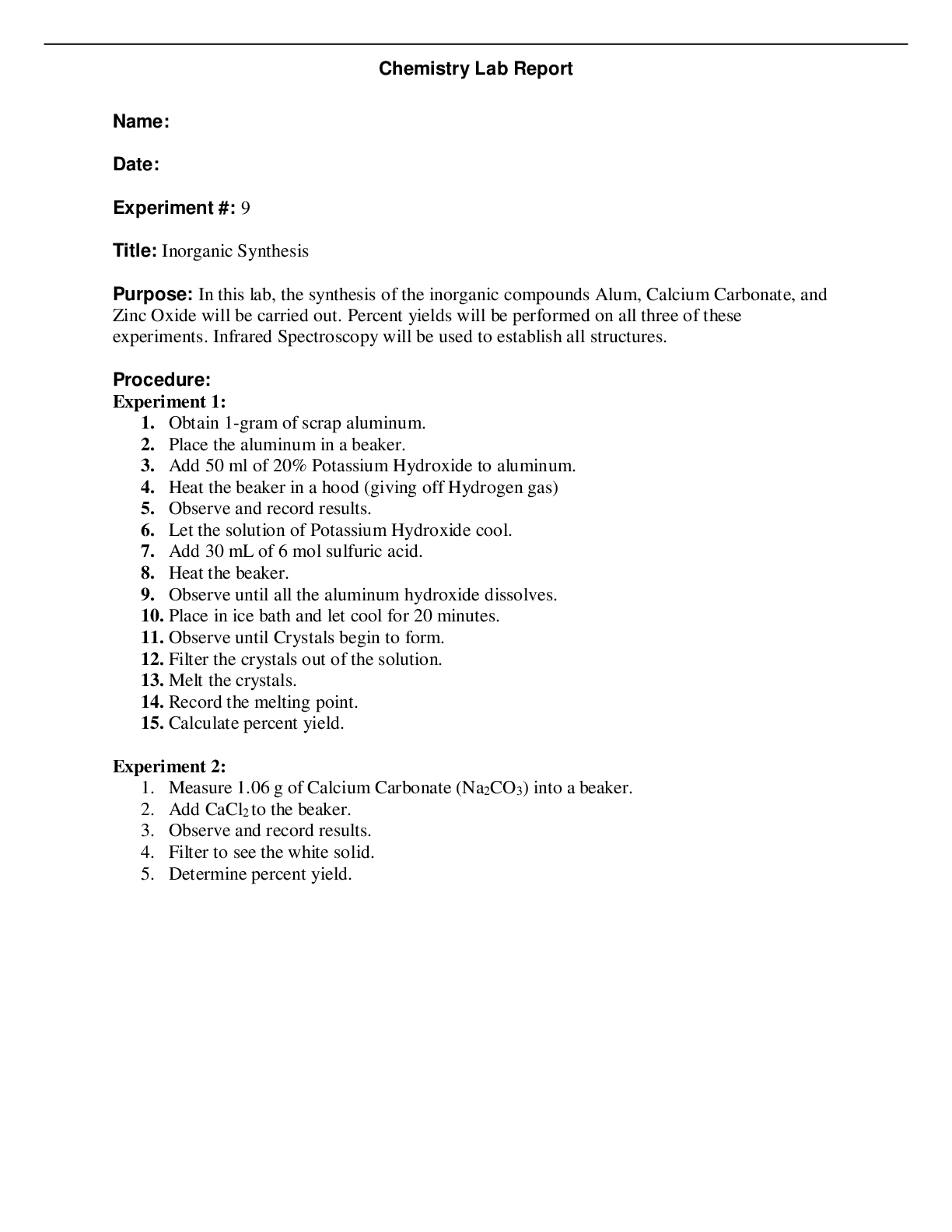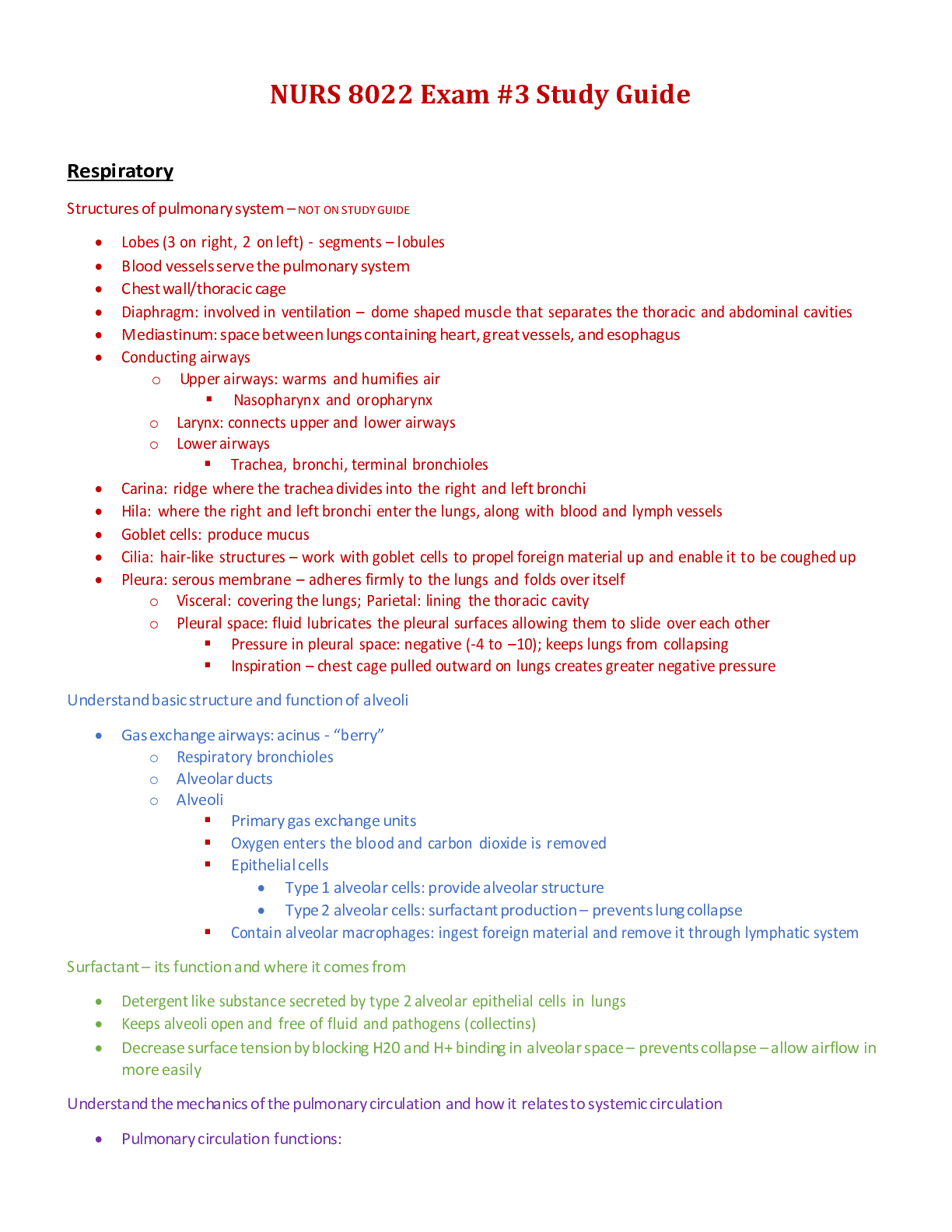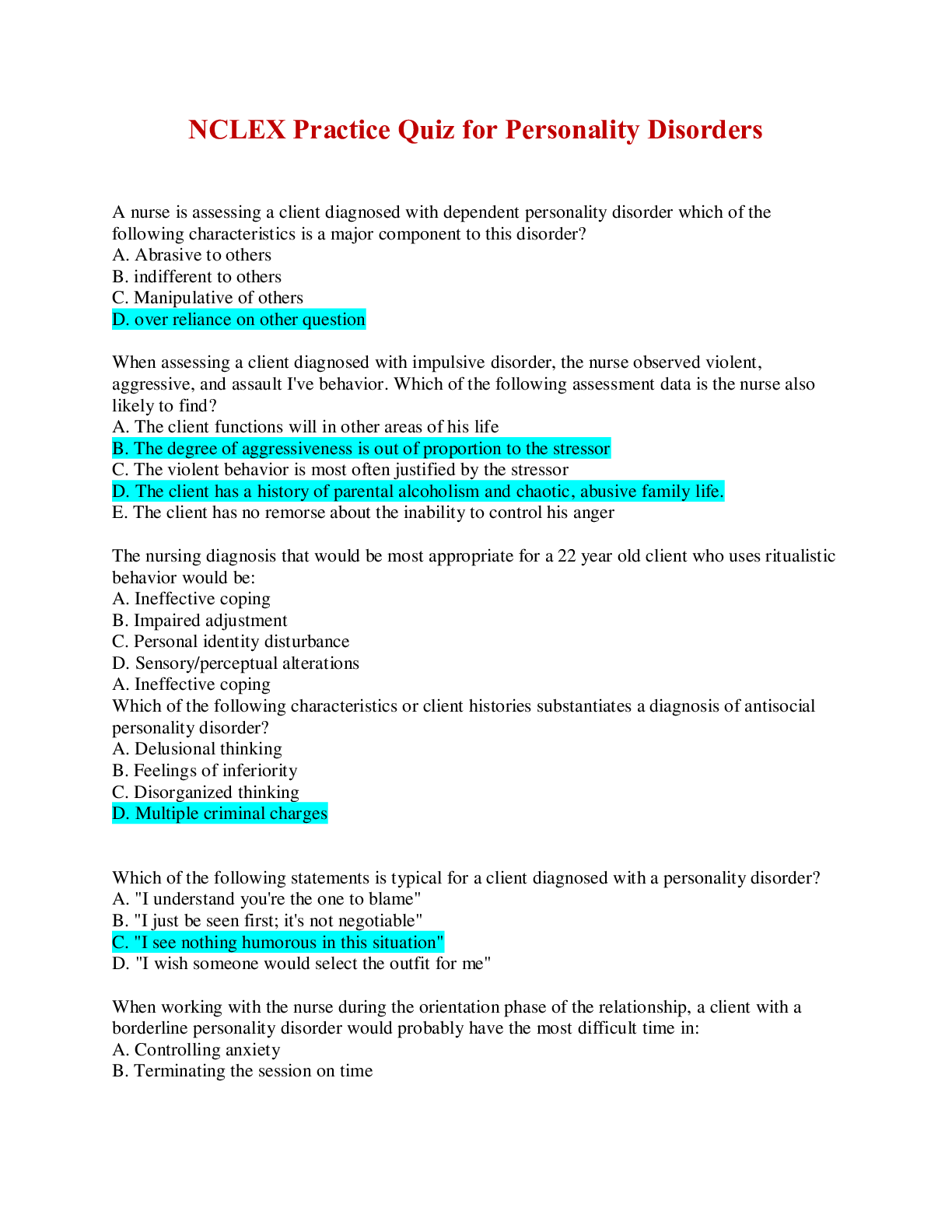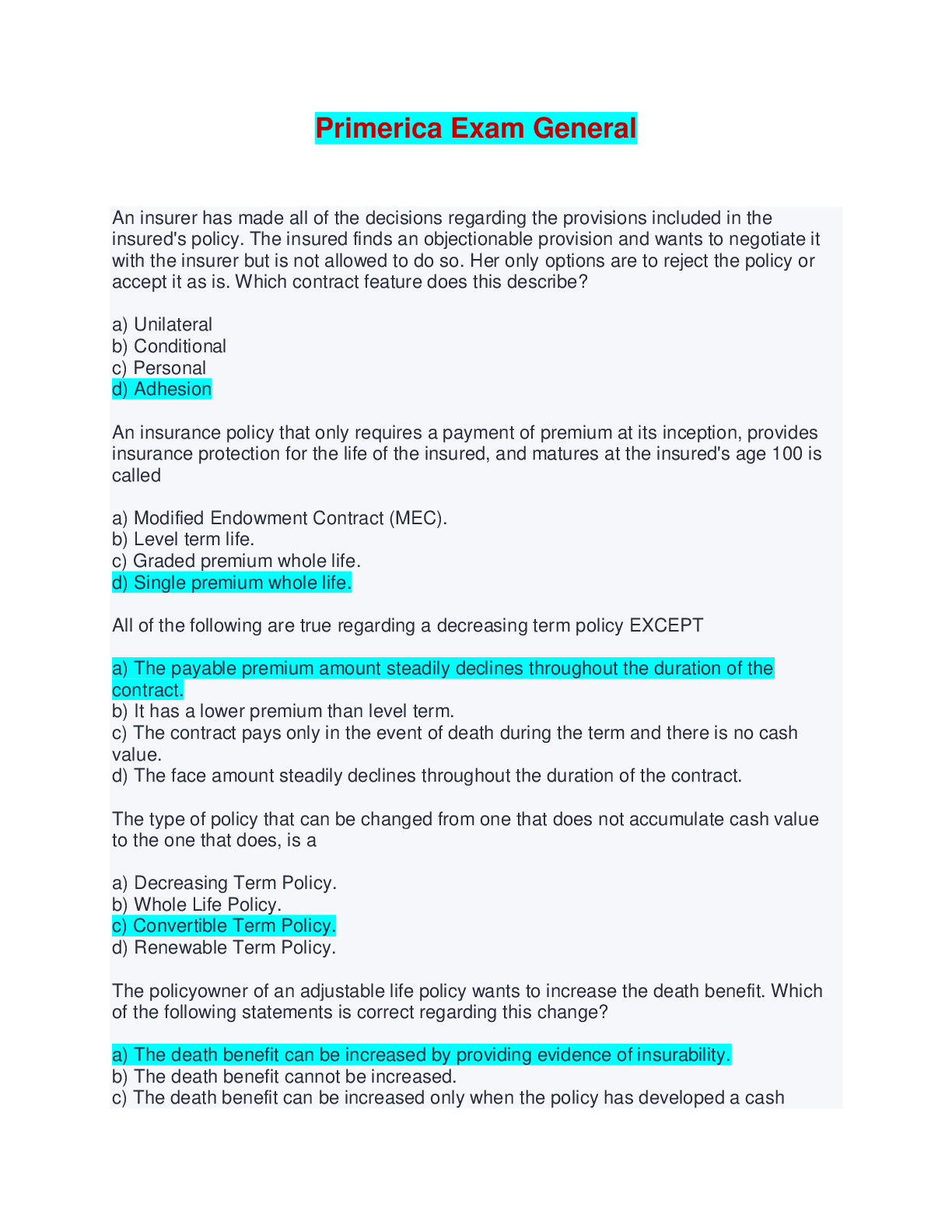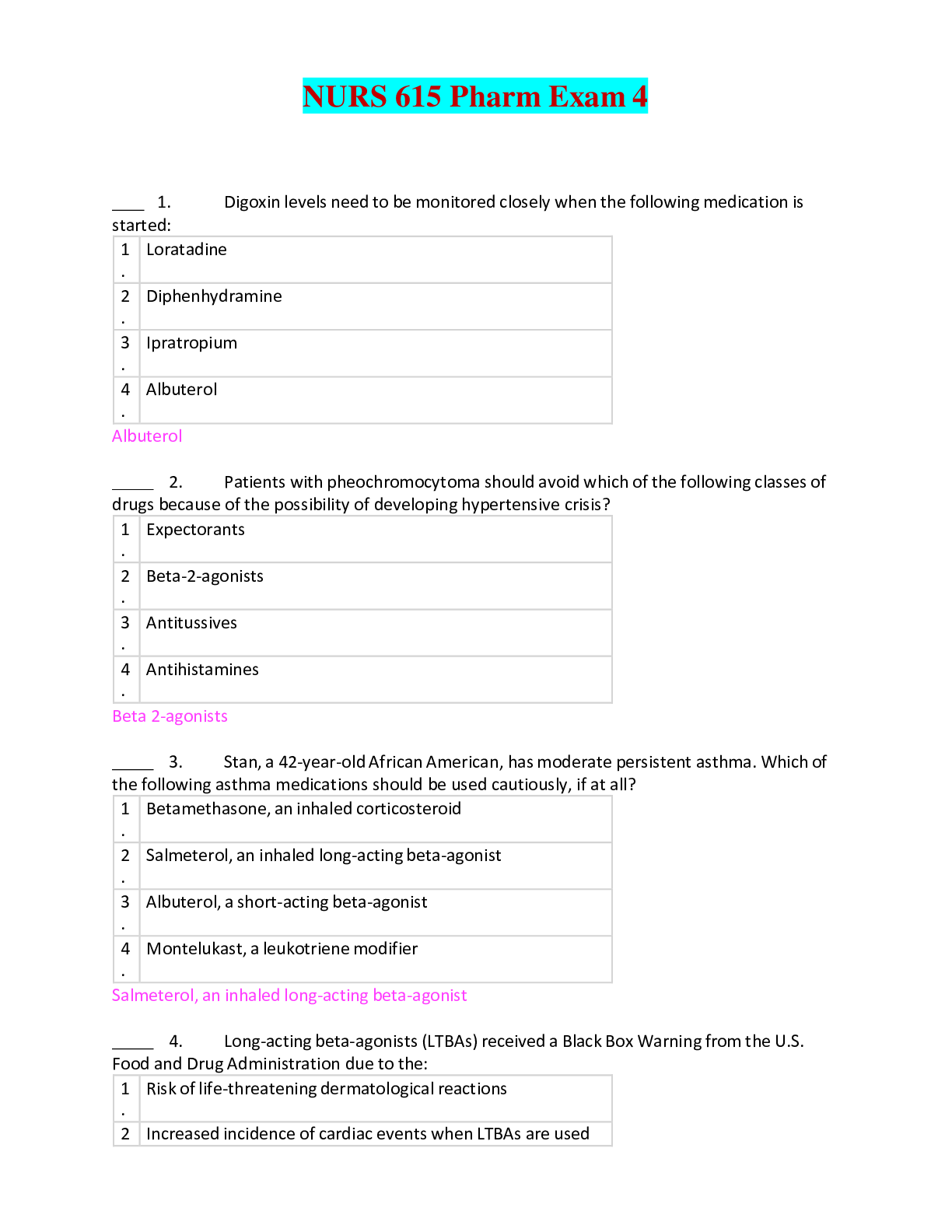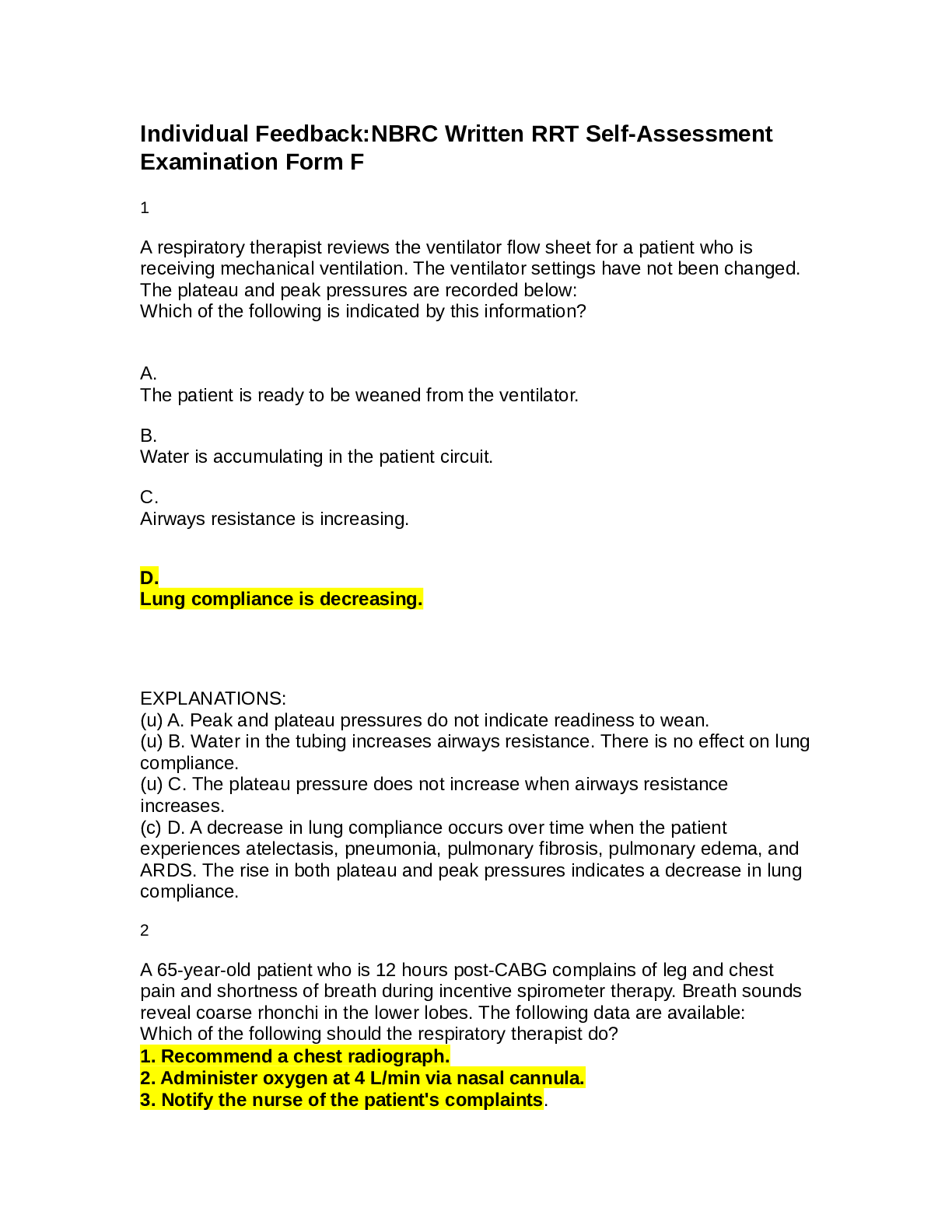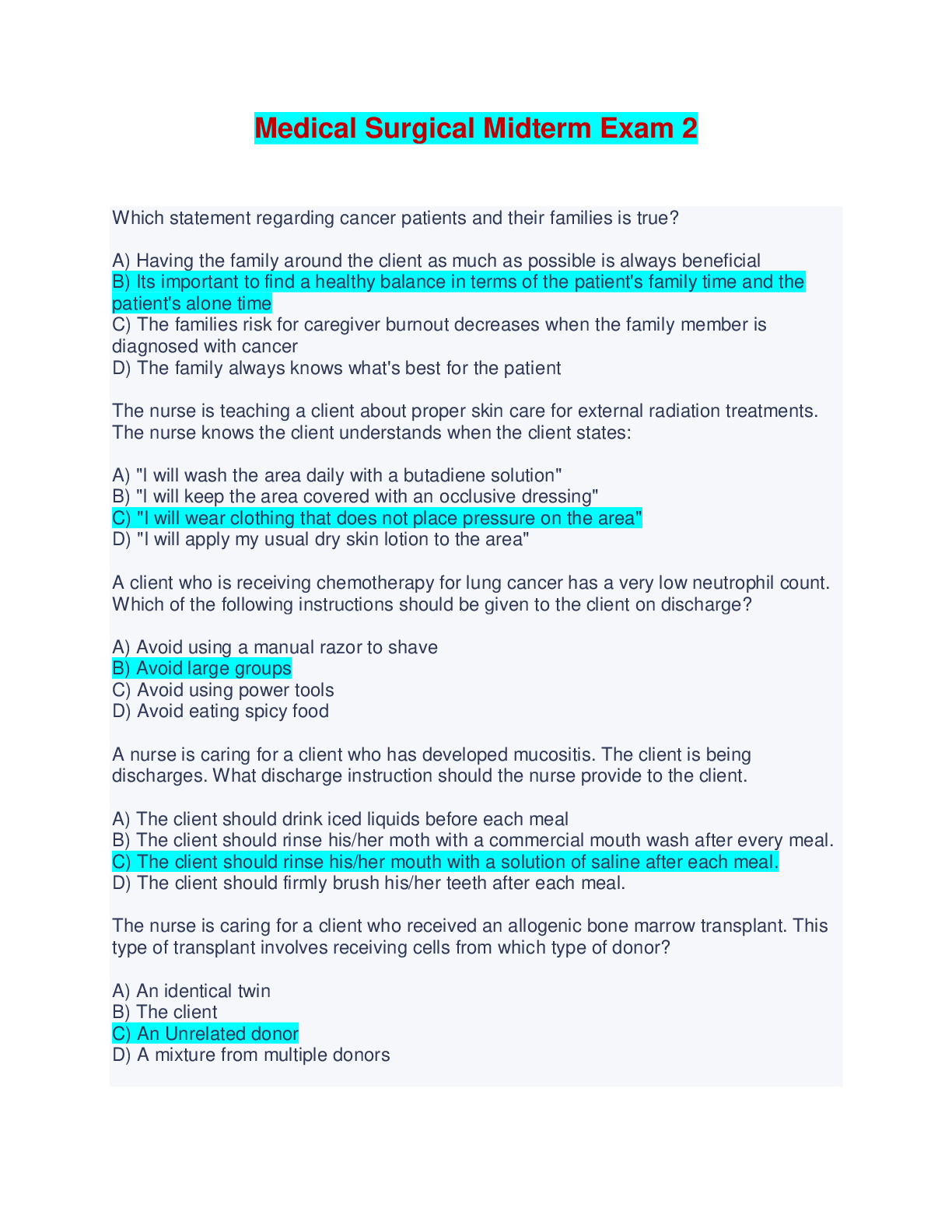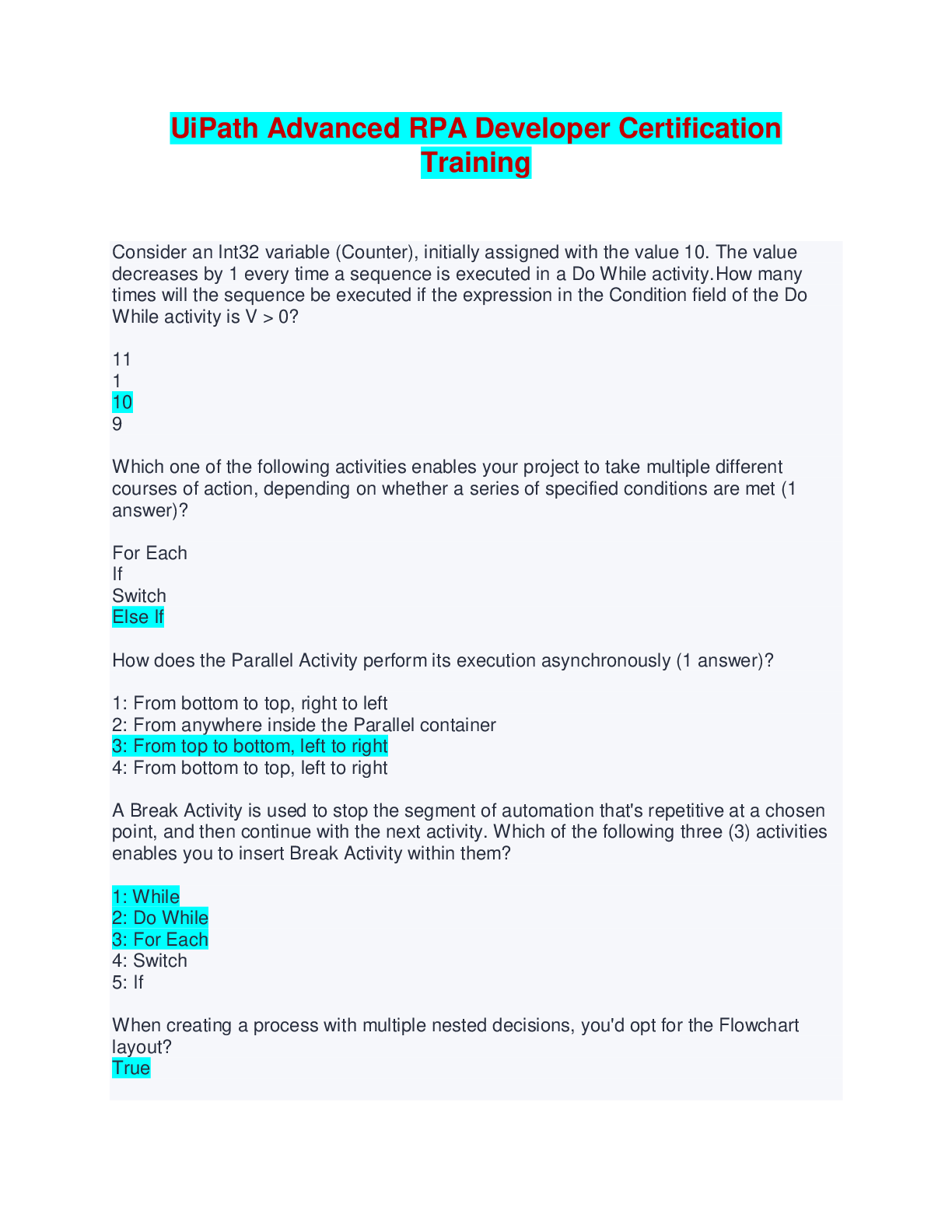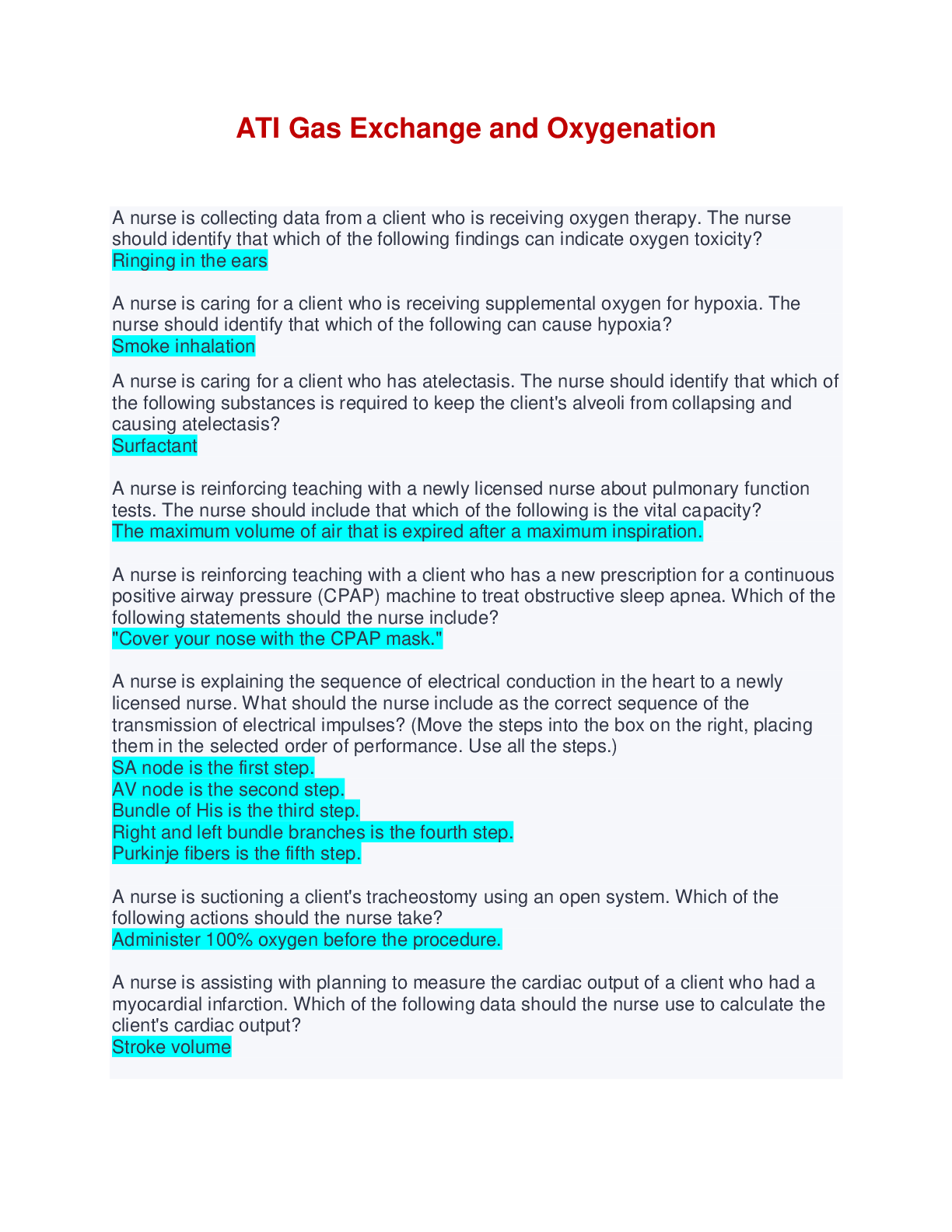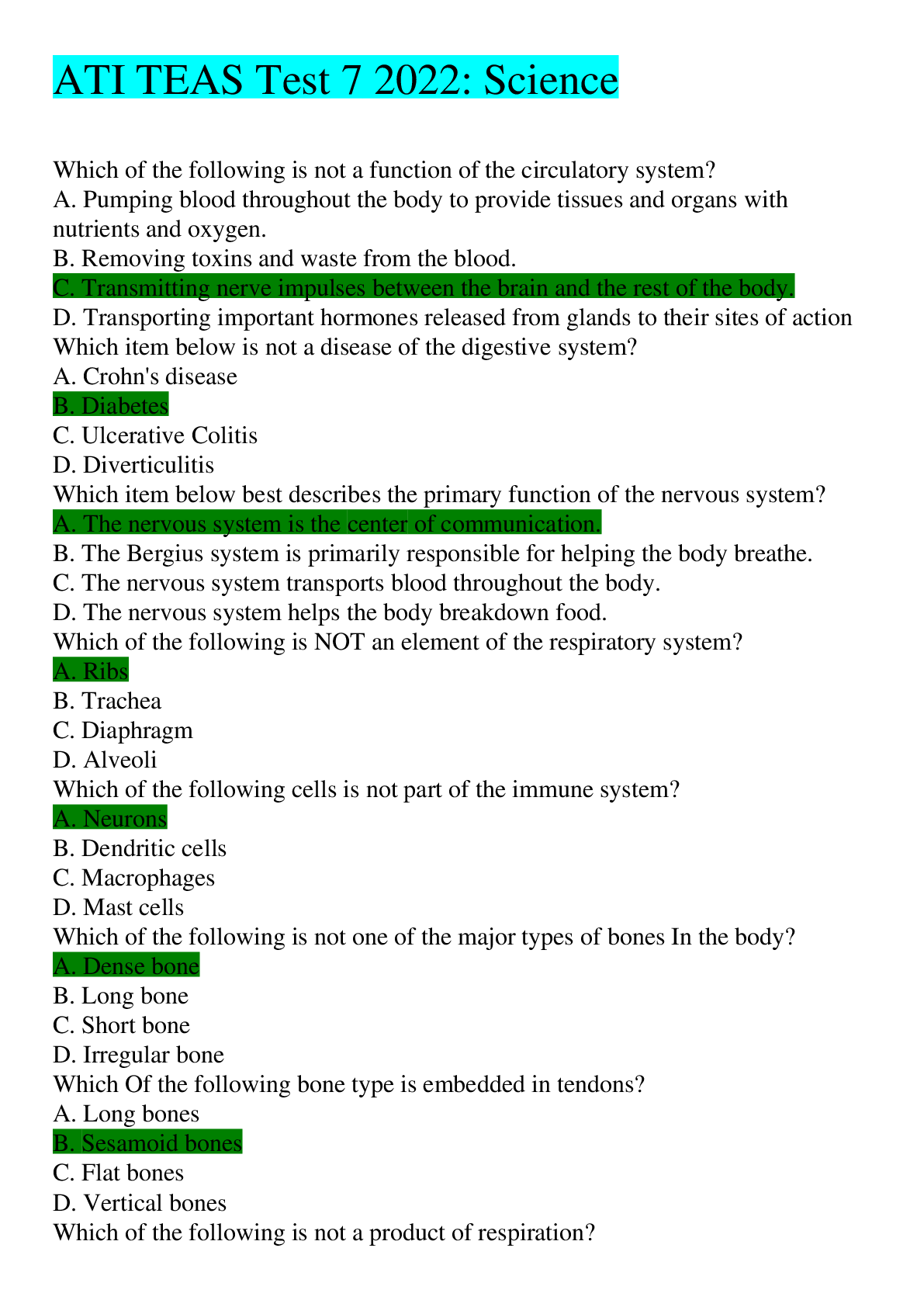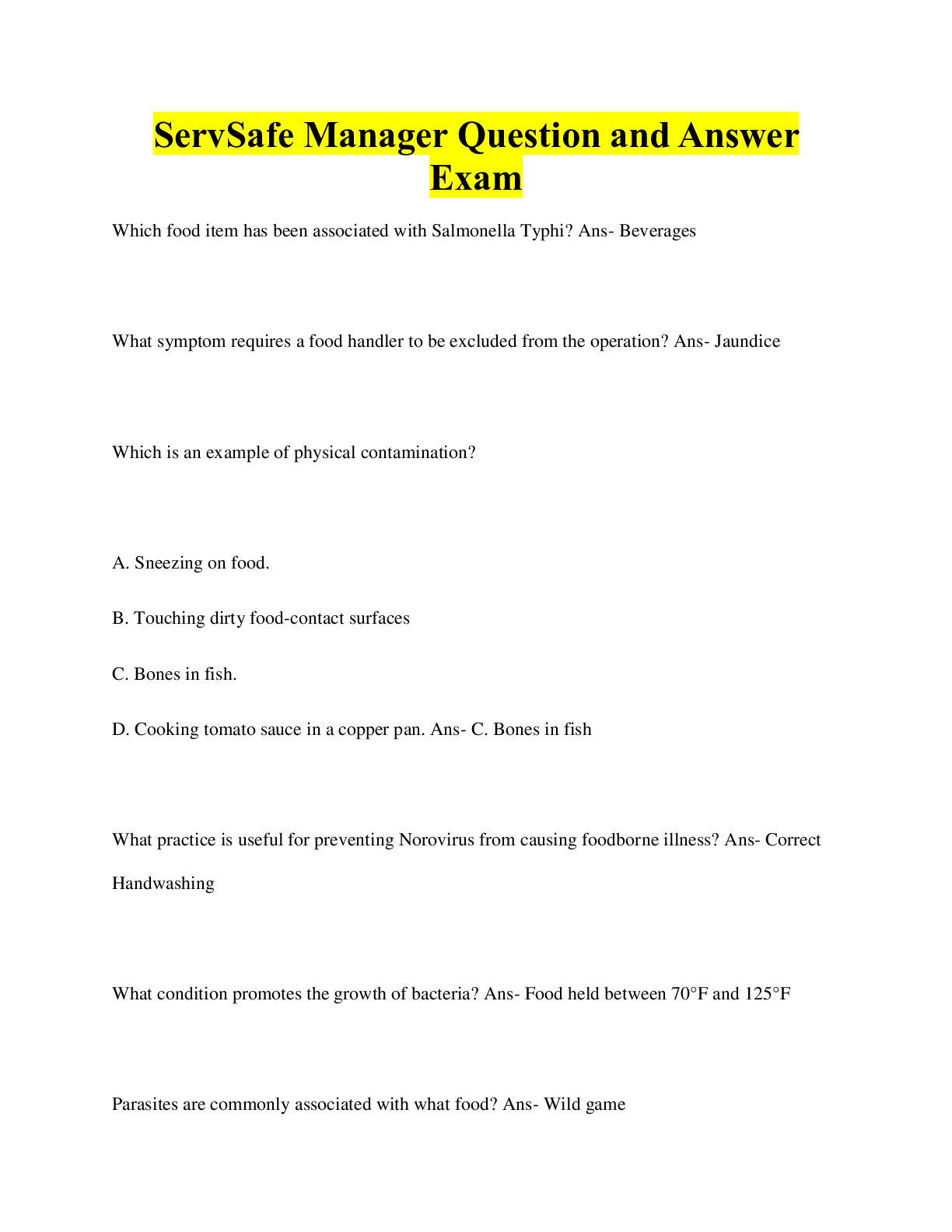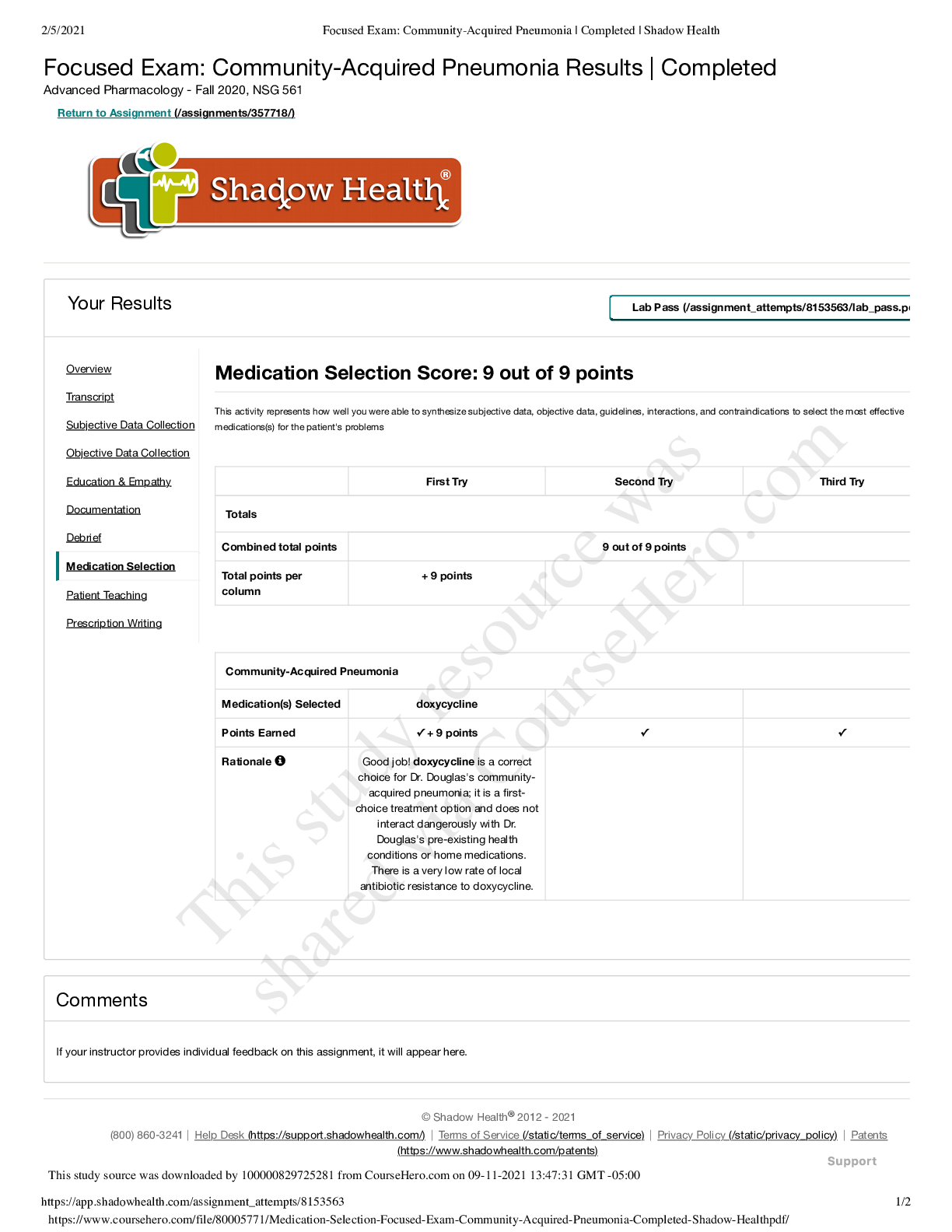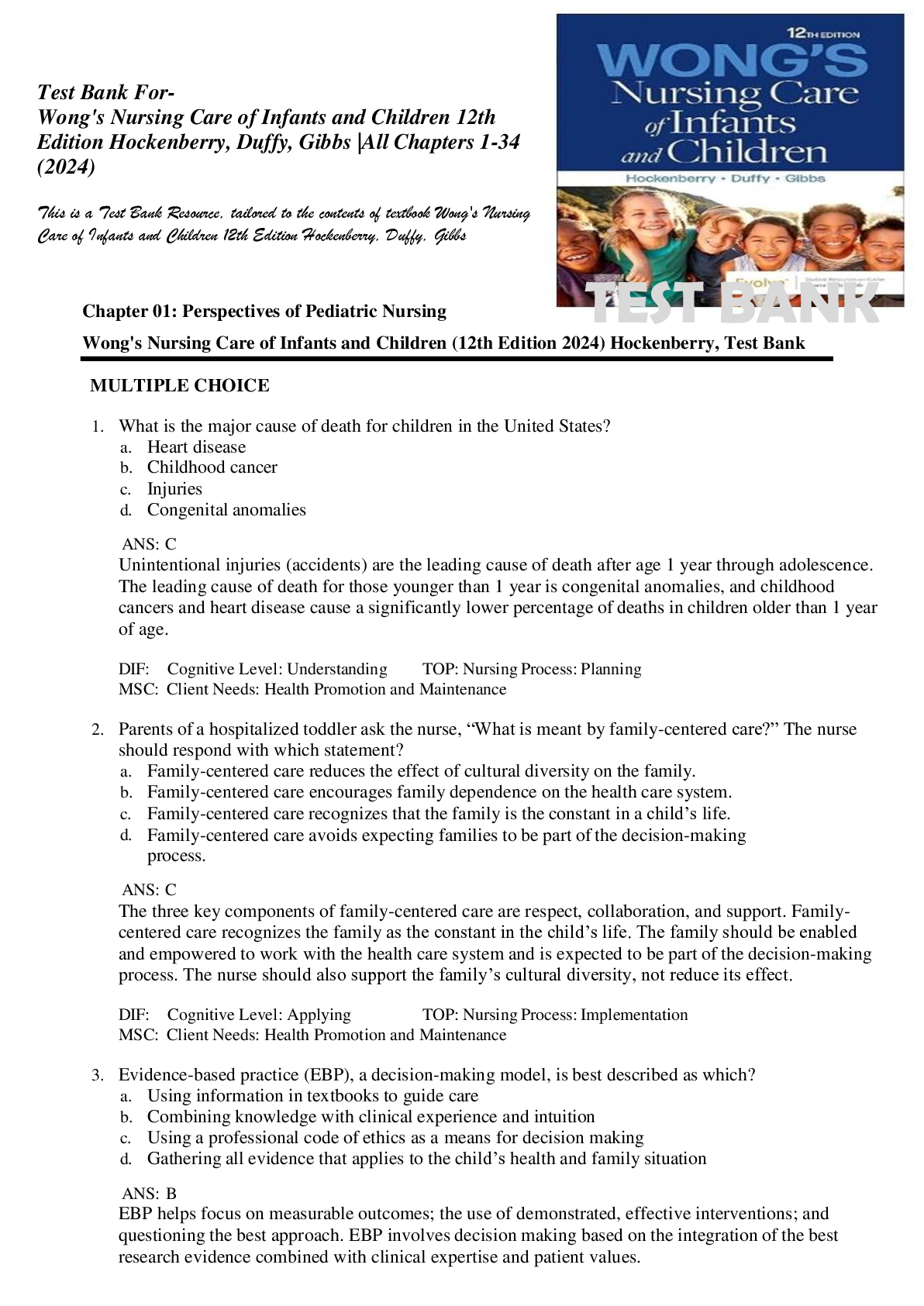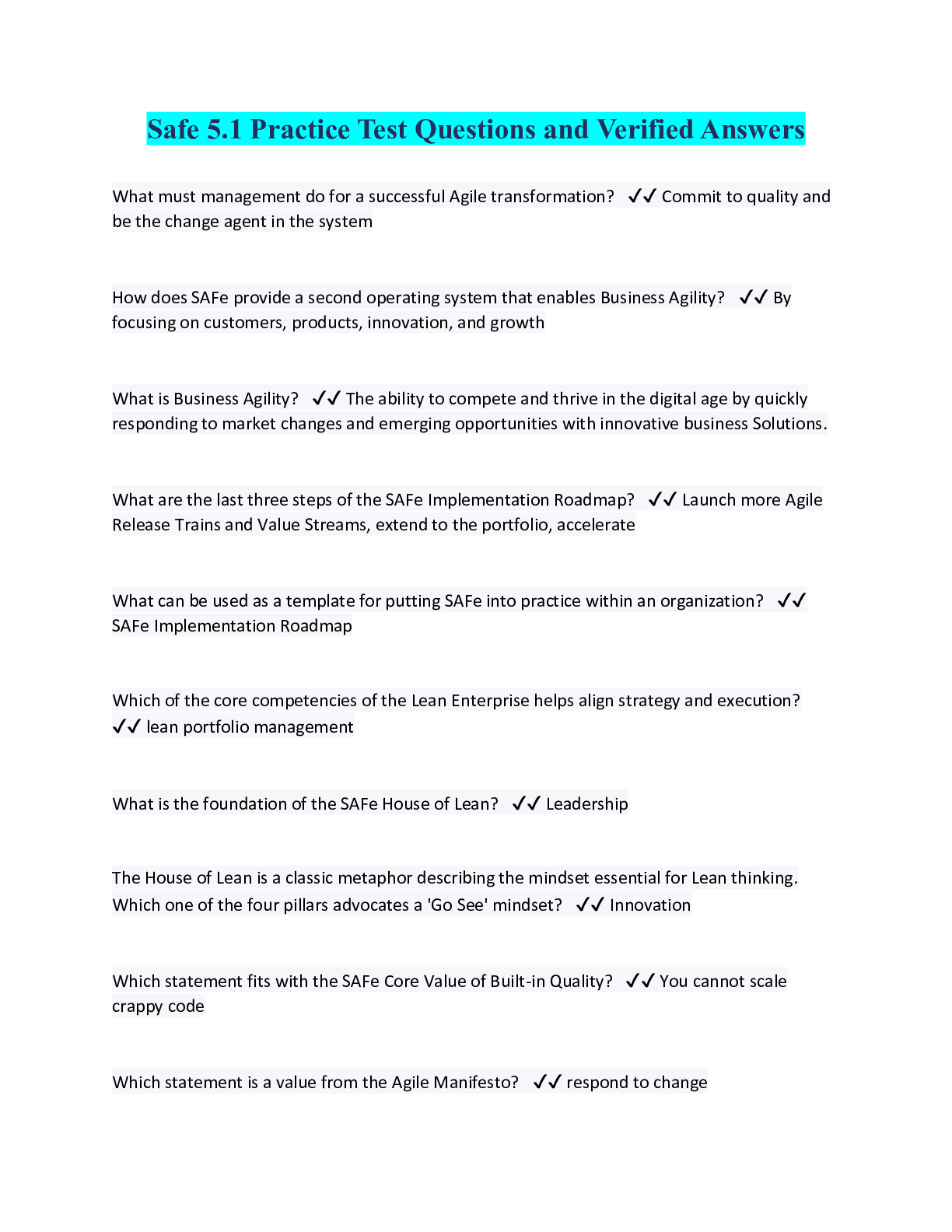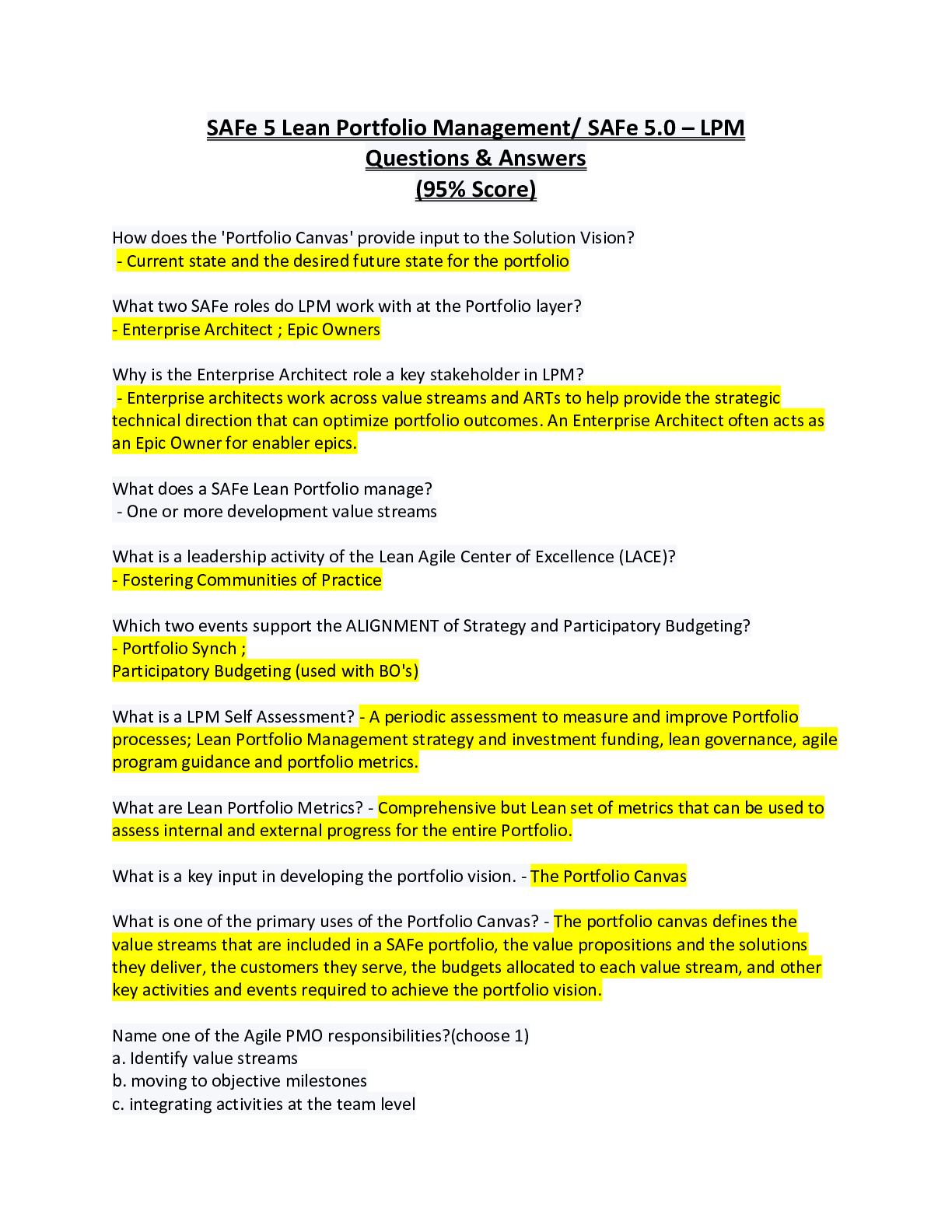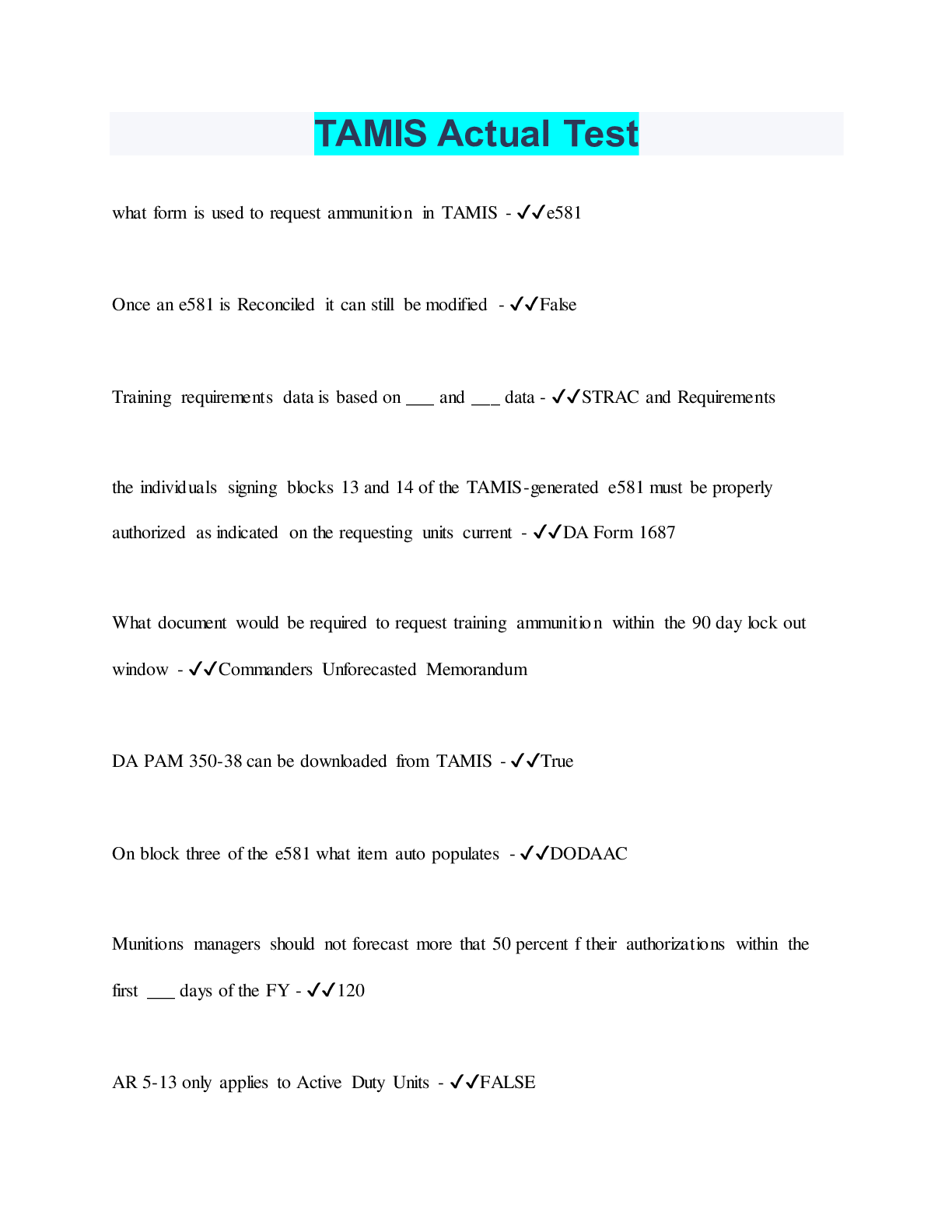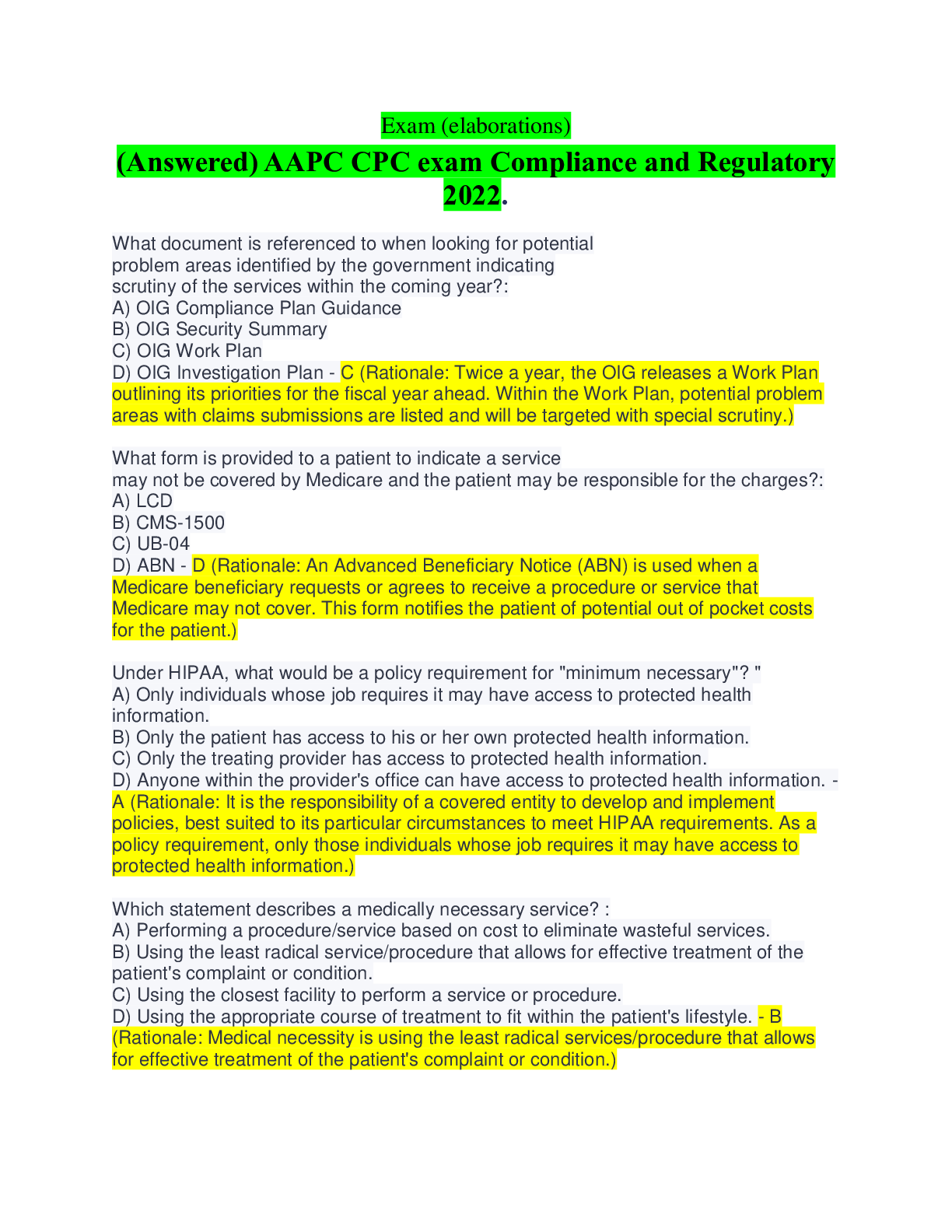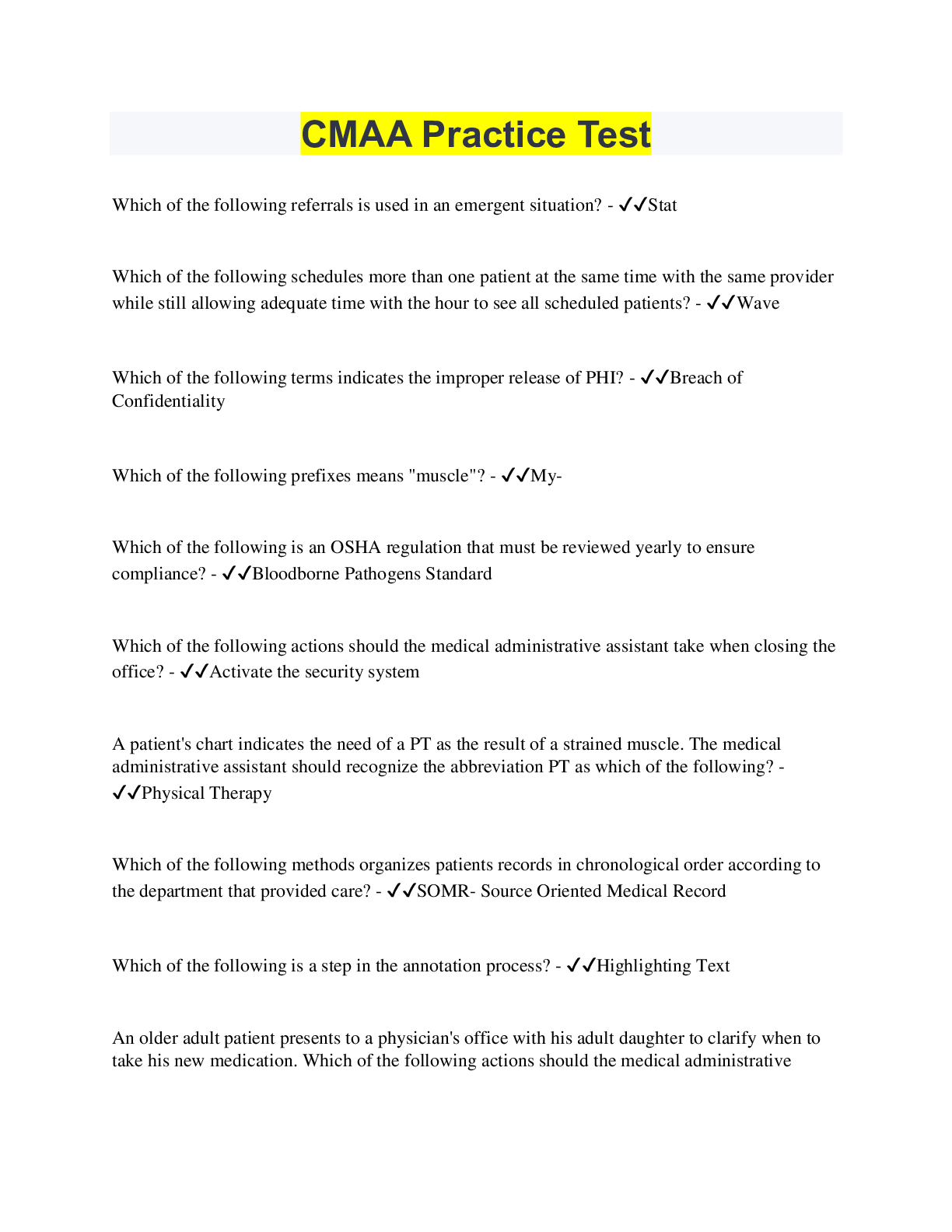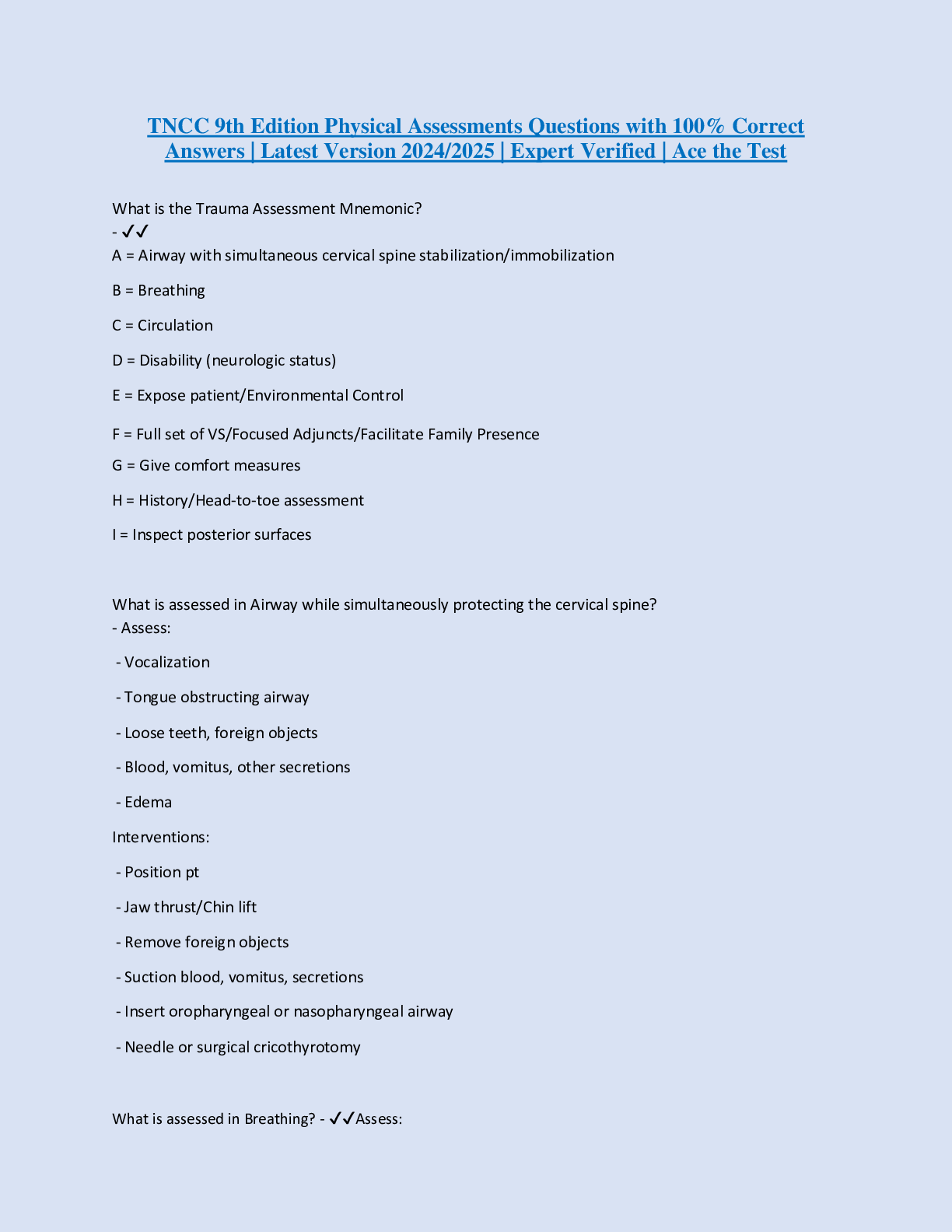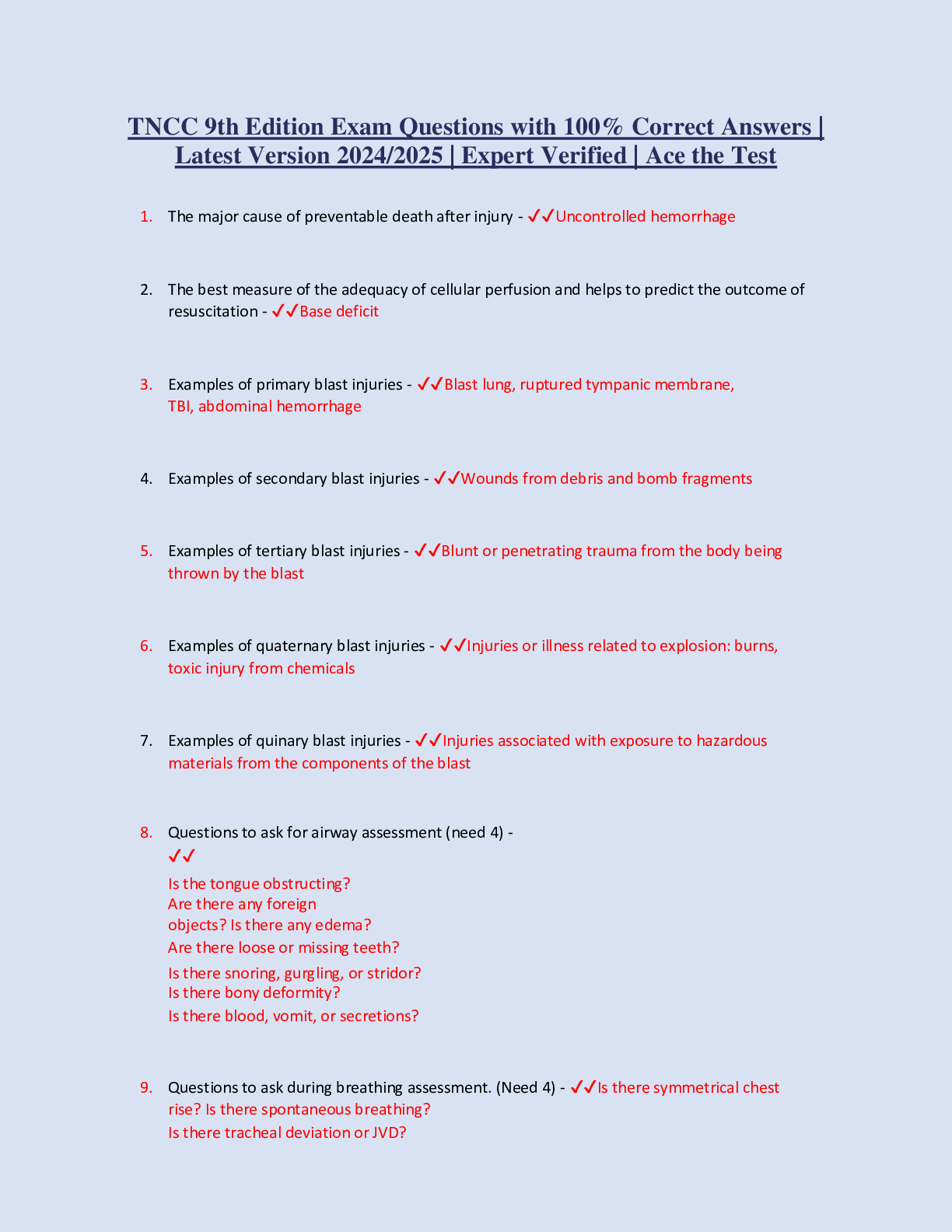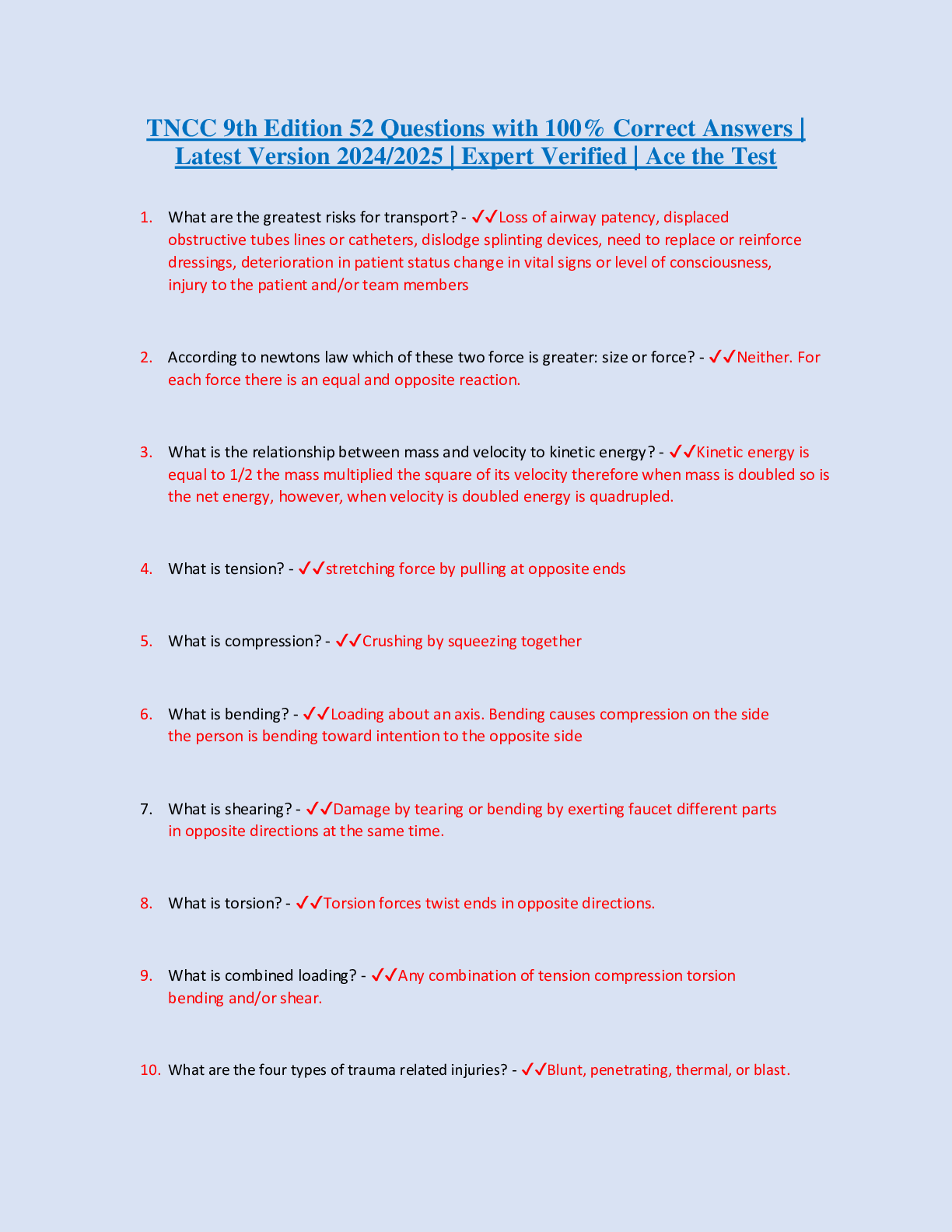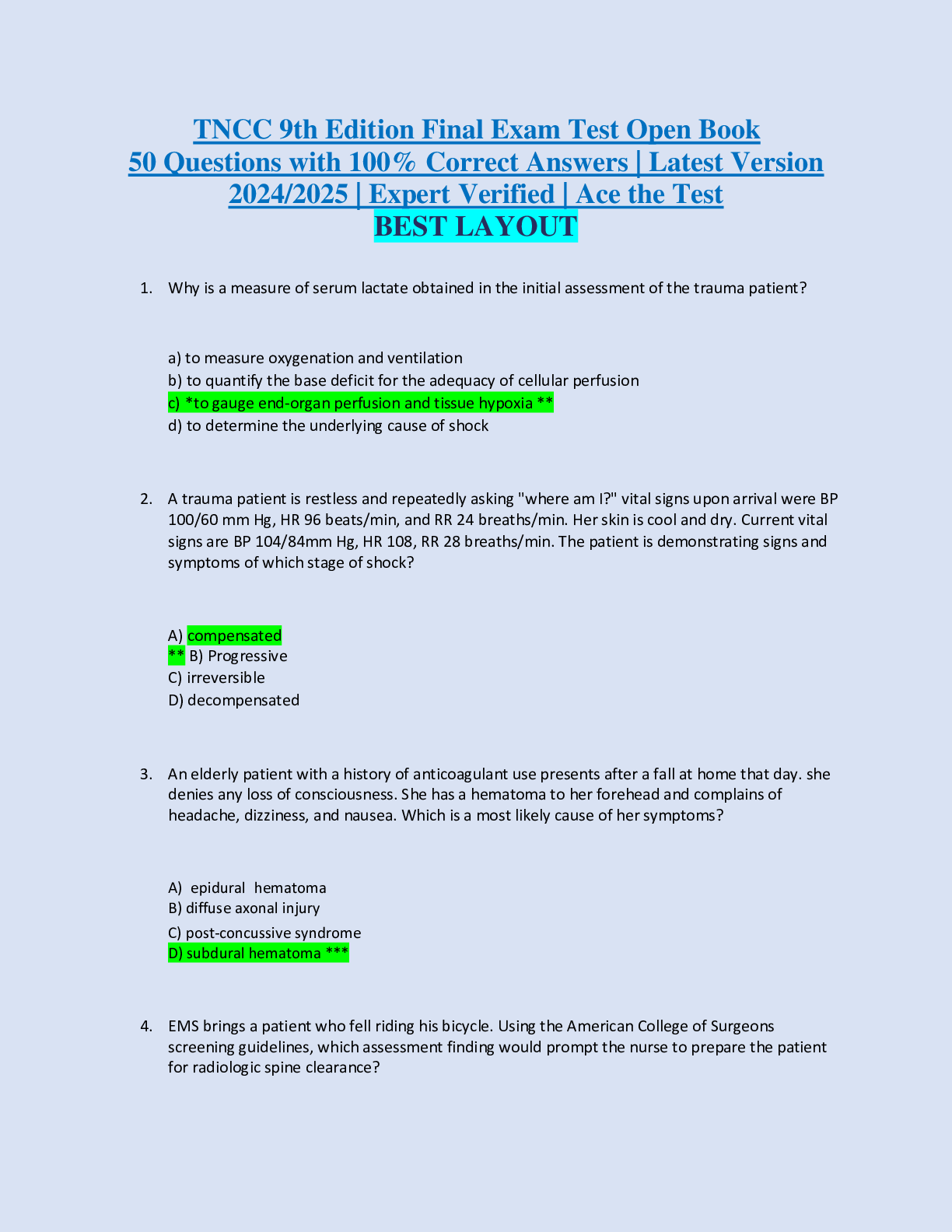Medical Surgical Nursing > EXAM > Medical Surgical EAQs - Questions and Answers (All)
Medical Surgical EAQs - Questions and Answers
Document Content and Description Below
Medical Surgical EAQs - Questions and Answers While assessing a postpartum client who is suspected of having a thyroid disorder, the nurse suspects that the client has autoimmune thyroiditis. Which ... diagnostic studies are most suitable for confirming the diagnosis? The postpartum client may have silent, painless thyroiditis. Radioactive iodine uptake is suppressed in silent thyroiditis, so this test would be beneficial in diagnosing the thyroiditis. The client is admitted to the hospital with a large goiter, and a thyroidectomy is performed. What should the nurse do during the first four hours after the surgery? After a thyroidectomy, it is critical to monitor for stridor, dyspnea, or other symptoms of acute airway obstruction that may result postoperatively. It is important to inspect the neck dressing, as well as the sides of the neck and behind the neck, for blood that may drain in that direction by gravity. The client needs to be placed in a semi-Fowler position to decrease tension on the suture line. Vital signs need to be monitored every 15 minutes until the client is stable, then every 30 minutes for 24 hours. Although this may be a complication of this surgery, tetany will not occur during the first 4 hours after surgery. A client's blood gases reflect diabetic ketoacidosis. Which clinical indicator should the nurse identify when monitoring this client's laboratory values? The bicarbonate-carbonic acid buffer system helps maintain the pH of body fluids; in metabolic acidosis, there is a decrease in bicarbonate because of an increase of metabolic acids. The pH is decreased. The nurse is caring for a client who is diagnosed with diabetes insipidus and is on intranasal desmopressin acetate (DDAVP). The client develops an upper respiratory tract infection during a hospital stay. Which alteration does the nurse anticipate in the client's prescription? the best alternative is to administer the DDAVP via oral or subcutaneous routes. The subcutaneous (parenteral) form of DDAVP is almost 10 times more potent than intranasal and oral forms. Therefore, if opting for subcutaneous route, the dose of DDAVP should be reduced. A client is learning alternate site testing (AST) for glucose monitoring. Which client statement indicates to the nurse that additional teaching is necessary? "The fingertip is preferred for glucose monitoring if hyperglycemia is suspected." The fingertip is preferred for glucose monitoring if hypoglycemia, not hyperglycemia, is suspected. A client who had a subtotal thyroidectomy returns to the unit from the postanesthesia care unit. What is the priority nursing action at this time? Observe for signs of tetany. The parathyroids may be excised accidentally during surgery; because they regulate calcium, lowered blood levels of calcium may induce tetany. A client with an aldosterone-secreting adenoma is scheduled for surgery to remove the tumor. The client asks what will happen if surgery is canceled. On what fact does the nurse base her response? Heart and kidney damage may occur if the tumor is not removed. Renal and cardiac complications will occur if hypertension is not arrested. A nurse is preparing to assess the client's thyroid gland. Arrange the procedure for posterior palpation of the thyroid gland in sequence. First stand behind the client and place the thumbs on the nape of the client's neck. Then use the index and middle fingers to feel the thyroid isthmus. Ask the client to flex the neck slightly forward and to the right to relax the neck muscles. Next palpate the sternocleidomastoid muscle with the index and middle fingers of the right hand. The thyroid will move up when the nurse asks the client to swallow water. An 11-year-old client is admitted with enlarged supraclavicular lymph nodes, fatigue, and low-grade fever. She also has a persistent nonproductive cough. In light of these findings, the nurse knows to gear education toward preparation for which therapies? The symptoms indicate possible Hodgkin lymphoma, so diagnostic testing will likely include CT and a lymph node biopsy. A client is admitted with a diagnosis of Cushing syndrome. Which clinical manifestations should the nurse expect the client to exhibit? Weakness occurs in response to the excessive catabolism of proteins and resulting loss of muscle mass. Hypertension occurs in response to excessive cortisol that causes an increase in circulating volume or an arteriole response to circulating catecholamines. Truncal obesity is caused by abnormal fat metabolism and deposition of fat in the mesenteric bed. What clinical indicators should a nurse assess when caring for a client with hyperthyroidism? Weight loss is associated with hyperthyroidism because of the increase in the metabolic rate. Muscle weakness and wasting also occur. Tachycardia, palpitations, increased systolic blood pressure, and dysrhythmias occur with hyperthyroidism because of the increased metabolic rate. Restlessness and insomnia are also associated with hyperthyroidism because of the increased metabolic rate. Protrusion of the eyeballs occurs with hyperthyroidism because of peribulbar edema. Which assessment finding is characteristic of a client with hypoparathyroidism? Hypoparathyroidism is manifested by increased serum phosphorus and decreased serum magnesium concentration. The normal level of serum phosphorus ranges from 3 to 4.5 mg/dL (0.97-1.45 mmol/L) and the normal serum magnesium level ranges from 1.3 to 2.1 mEq/L (1.3-2.1 mmol/L). A client who is to begin continuous ambulatory peritoneal dialysis asks the nurse what this entails. What information should the nurse include when answering the client's question? Dialysate is introduced into the peritoneal cavity where fluids, electrolytes, and wastes are exchanged through the peritoneal membrane. A client undergoing corticosteroid therapy is admitted with a peptic ulcer, osteoporosis, and hypertension. Which medication may have caused this condition? Methylprednisolone is a corticosteroid that suppresses inflammatory responses and inhibits both cytokine production and T-cell activation. While assessing a client with acquired immunodeficiency syndrome, the nurse suspects that the client has developed cryptosporidiosis. Which symptoms support the nurse's suspicion? Cryptosporidiosis is an intestinal infection caused by Cryptosporidium. The symptoms of cryptosporidiosis are diarrhea and weight loss. Which medication should the nurse anticipate being prescribed for a client with C. difficile-associated disease (CDAD)? A new oral antibacterial drug available specifically for managing C. difficile is fidaxomicin. Oral metronidazole and vancomycin have been the drugs of choice to treat CDAD. Which medications act by binding with integrase enzyme and prevent human immunodeficiency virus (HIV) from incorporating its genetic material into the client's cell? [Show More]
Last updated: 6 months ago
Preview 1 out of 16 pages
Instant download
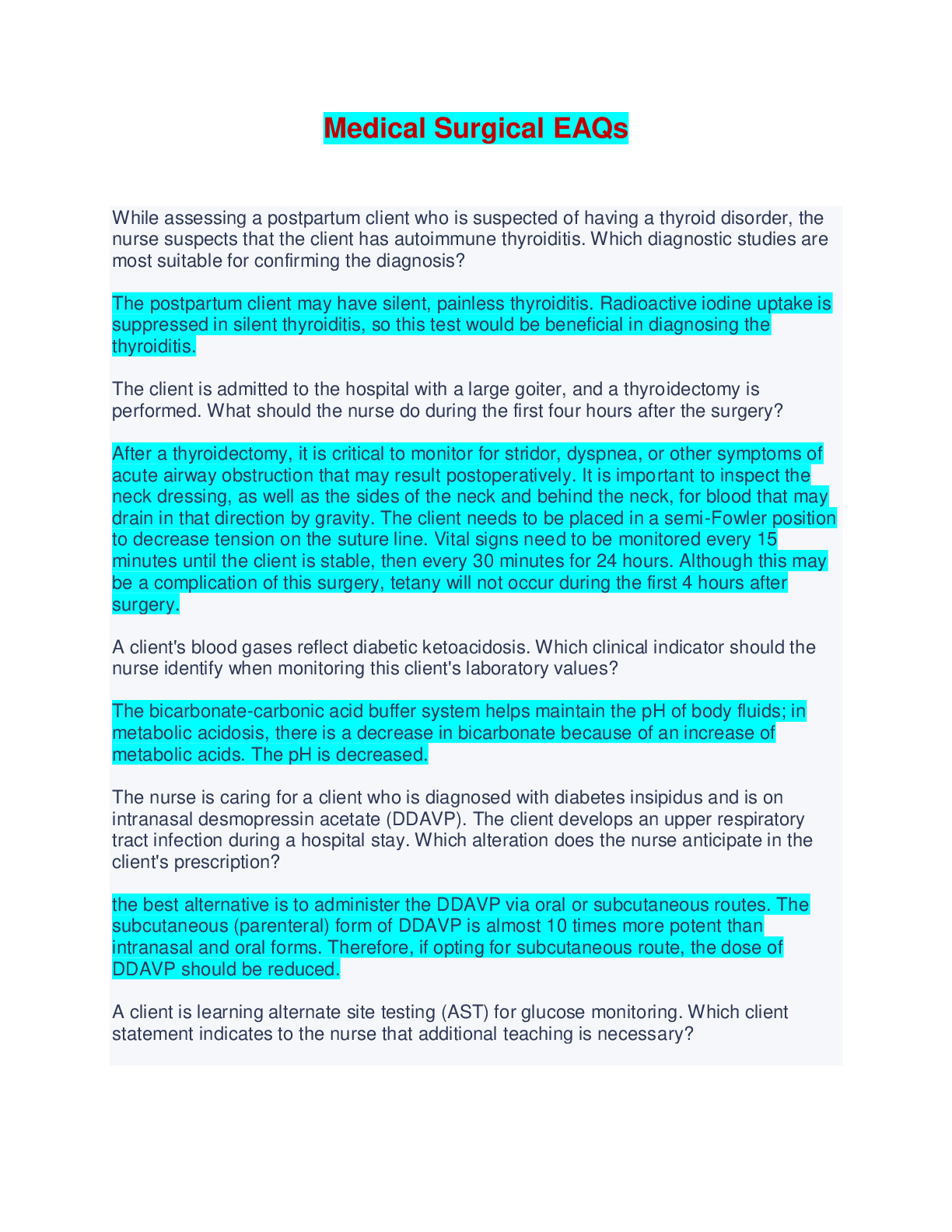
Instant download
Reviews( 0 )
Document information
Connected school, study & course
About the document
Uploaded On
Nov 02, 2023
Number of pages
16
Written in
Additional information
This document has been written for:
Uploaded
Nov 02, 2023
Downloads
0
Views
30



